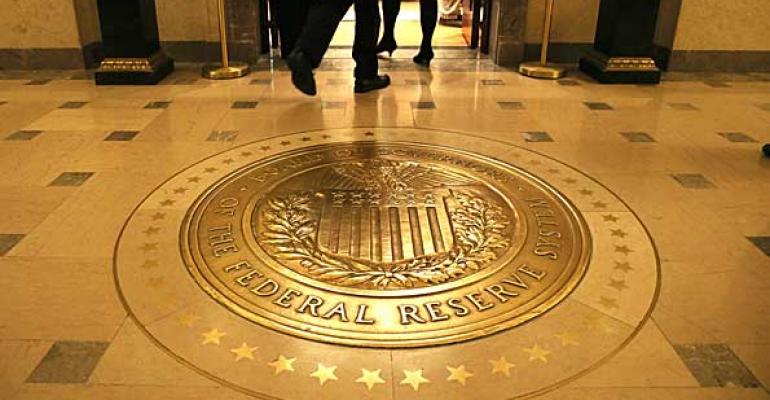(Bloomberg) -- The Federal Reserve Board plans to begin gradually selling a portfolio of corporate debt purchased through an emergency lending facility launched last year, as the Covid-19 pandemic was spreading panic through financial markets.
“Portfolio sales will be gradual and orderly, and will aim to minimize the potential for any adverse impact on market functioning by taking into account daily liquidity and trading conditions for exchange traded funds and corporate bonds,” the Fed said in a statement on Wednesday.
The New York Fed will provide additional details before sales begin, it added.
There was around $13.7 billion outstanding in the Fed’s Secondary Market Corporate Credit Facility in a range of corporate bond and ETF holdings, according to balance sheet details updated last week.
“At the time, it defined the controversial, outer limits of the Fed’s involvement in financial markets,” said Mark Spindel, chief investment officer for the District of Columbia’s Retirement Board. At such tight spreads for corporate debt, “it would seem to be a facility that has run its course.”
Emergency Facilities
The Fed plans to start the process with ETFs -- with the selling of corporate bonds to begin later in the summer. The aim is to complete the exercise by the end of the year.
A Federal Reserve spokeswoman said the portfolio wind down has nothing to do with monetary policy, and it is not a signal about monetary policy. The corporate credit facility stopped purchasing assets at the end of 2020.
The announcement comes at a sensitive time for the Fed as markets are expecting the central bank to start debating scaling back its $120 billion in monthly asset purchases in coming months. Wednesday’s announcement -- concerning a facility who’s size is tiny in the context of an almost $8 trillion Fed balance sheet -- shows some urgency by the Fed Board to close emergency facilities if possible.
“This move highlights the Fed’s discomfort with holding these instruments -- and the associated credit risk -- on its balance sheet, even with protection from a Treasury backstop,” said Nathan Sheets, chief economist at PGIM Fixed Income.
Investment-grade and high-yield credit default swaps indexes, a measure of credit risk, were little changed after the news.
Bonds, ETFs
The secondary corporate credit facility was launched in March 2020 to support financing for hundreds of large employers. Its holdings include a range of bonds and ETFs from companies such as Amazon.com Inc. to ETFs such as VanEck Vectors Fallen Angel High Yield Bond ETF.
It was an unusual step for the Fed in that it didn’t extend a loan as it typically does with its emergency powers but instead became a buyer of last resort in secondary markets. While relatively small, the Fed backstop stemmed panic, bringing buyers back into the market and allowing companies to finance billions of dollars in credit.
In another unprecedented step, the Fed also dipped into lower quality debt by purchasing ETFs that invested in higher-risk credits. The majority of the corporate credit facility’s holdings are investment grade.
Borrowing Costs
The cost of borrowing has rarely been cheaper since the Fed stepped in during the pandemic. U.S. high-grade bond spreads fell to a 14-year low Friday as investors temper their inflation projections and grow bullish on a reopening economy. Meanwhile the average yield for junk debt hit an all-time low at 3.88% in early May.
Companies first used the debt markets to raise liquidity, but quickly turned to refinancing debt to lock in the cheap rates.
“This should have no impact on the corporate credit markets, given the small size of the Fed’s holdings,” said Ashok Bhatia, deputy chief investment officer of fixed income at Neuberger Berman. “The Fed now has a blueprint for successfully supporting credit markets if the need ever arises again.”
Left unstated by the Fed on Wednesday is whether such an expansive safety net will change assessments about corporate credit risk in the future.
--With assistance from Gowri Gurumurthy and Jack Pitcher.





